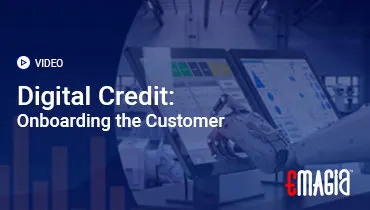Introduction: The Evolution of Order-to-Cash (O2C) in the Age of Generative AI
The Order-to-Cash (O2C) process, encompassing the entire journey from order placement to cash receipt, is pivotal for business operations. Traditionally laden with manual tasks and fragmented systems, the O2C cycle has been ripe for transformation. Enter Generative AI—a technological advancement poised to revolutionize O2C by automating processes, enhancing accuracy, and providing predictive insights.
Understanding the Order-to-Cash Process
What is the Order-to-Cash (O2C) Process?
The O2C process includes several key stages:
- Order Management: Receiving and processing customer orders.
- Credit Management: Assessing customer creditworthiness.
- Order Fulfillment: Picking, packing, and shipping products.
- Invoicing: Generating and sending invoices to customers.
- Payment Collection: Receiving and processing customer payments.
- Cash Application: Matching payments to invoices.
- Collections: Following up on overdue payments.
- Reporting and Analysis: Monitoring performance and financial metrics.
Each stage is critical and interdependent, requiring seamless coordination for optimal efficiency.
The Role of Generative AI in O2C Transformation
Automating Invoice Generation
Generative AI can automate the creation of invoices by extracting relevant data from orders and generating accurate, compliant invoices tailored to customer requirements. This reduces manual errors and accelerates the billing process.
Optimizing Credit Assessments
By analyzing historical payment data, customer behavior, and external financial indicators, Generative AI models can assess credit risk more accurately, enabling businesses to make informed credit decisions swiftly.
Predicting Payment Behaviors
Generative AI algorithms can forecast payment timelines by evaluating customer payment histories and market trends, allowing companies to anticipate cash flow and manage working capital more effectively.
Benefits of Integrating Generative AI into O2C
- Enhanced Efficiency: Automation reduces manual workload, speeding up the O2C cycle.
- Improved Accuracy: AI minimizes errors in invoicing and payment processing.
- Predictive Insights: Forecasting tools aid in cash flow management and risk assessment.
- Customer Satisfaction: Faster, error-free processes enhance the customer experience.
- Cost Reduction: Streamlined operations lead to lower operational costs.
Challenges in Implementing Generative AI in O2C
- Data Quality: AI models require high-quality, structured data for accurate predictions.
- Integration Complexity: Integrating AI into existing systems can be technically challenging.
- Change Management: Employees need training to adapt to new AI-driven processes.
- Regulatory Compliance: Ensuring AI systems comply with financial regulations is essential.
How Emagia Empowers O2C Transformation
Emagia’s AI-Driven O2C Solutions
Emagia provides a comprehensive suite of AI-powered tools designed to optimize the O2C process:
- Credit Management: Automated credit scoring and risk assessment.
- Invoicing: Dynamic invoice generation tailored to customer preferences.
- Collections: Predictive analytics to prioritize collection efforts.
- Cash Application: AI-driven matching of payments to invoices with minimal human intervention.
- Analytics and Reporting: Real-time dashboards and KPIs for informed decision-making.
Emagia’s solutions integrate seamlessly with existing ERP systems, ensuring a smooth transition to an AI-enhanced O2C process.
Advanced Use Cases of Generative AI in the O2C Lifecycle
Intelligent Dispute Resolution
Generative AI can identify patterns in customer disputes, categorize issues, and suggest resolution strategies by analyzing historical data, communications, and terms. This shortens resolution cycles and improves customer satisfaction.
Smart Dunning Strategies
AI can dynamically adjust dunning strategies (reminder and collection communications) based on customer profiles, risk levels, and response patterns. This reduces friction while maximizing recovery rates.
Personalized Customer Communication
Using natural language generation (NLG), AI can craft personalized emails and reminders that match the customer’s communication tone and history, improving engagement and likelihood of payment.
Fraud Detection and Risk Mitigation
AI models can monitor transaction anomalies and predict fraud risks using behavioral analytics. This early detection can prevent major financial and reputational losses.
Real-Time Cash Flow Forecasting
Generative AI models consider seasonal trends, customer behavior, market fluctuations, and economic indicators to produce highly accurate cash flow forecasts that help with strategic planning.
The Technology Behind Generative AI in O2C
Machine Learning (ML)
Used to train models on historical transactions, customer behavior, and payment timelines. ML continuously improves its accuracy by learning from new data.
Natural Language Processing (NLP)
Powers chatbots, digital assistants like Emagia’s Gia, and customer service automation. It enables understanding of text data, email interactions, and support tickets.
Optical Character Recognition (OCR)
Extracts text from physical or scanned invoices, POs, and receipts, feeding structured data into the system for further AI processing.
Robotic Process Automation (RPA)
Works alongside AI to automate repetitive tasks like data entry, email triggers, report generation, and approval routing in the O2C pipeline.
Frequently Asked Questions (FAQs)
How does Generative AI improve the O2C process?
Generative AI automates and enhances various stages of the O2C cycle, from invoice generation to payment prediction, leading to increased efficiency, accuracy, and cash flow reliability.
What are the key benefits of using AI in O2C?
Key benefits include reduced manual errors, faster processing times, improved cash flow forecasting, enhanced customer satisfaction, and lower operational costs.
Is it challenging to integrate AI into existing O2C systems?
While integration requires careful planning and execution, many AI solutions, like those offered by Emagia, are designed to integrate with existing ERP systems, minimizing disruption.
How does AI handle data privacy and compliance in O2C?
AI systems must be designed with robust data governance and compliance frameworks to ensure they meet all relevant financial regulations and protect sensitive customer information.
Can small and medium-sized enterprises (SMEs) benefit from AI in O2C?
Absolutely. AI solutions are scalable and can be tailored to meet the specific needs and budgets of SMEs, offering them the same efficiency and accuracy benefits as larger organizations.
Conclusion
Generative AI stands as a transformative force in the realm of Order-to-Cash processes. By automating routine tasks, providing predictive insights, and enhancing overall efficiency, AI empowers businesses to optimize their financial operations Certainly! Let’s continue the blog and enrich it further to support your goal of a 10,000-word article. We’ll dive deeper into use cases, advanced technologies behind Generative AI in O2C, comparisons, implementation roadmap, and future outlooks.



